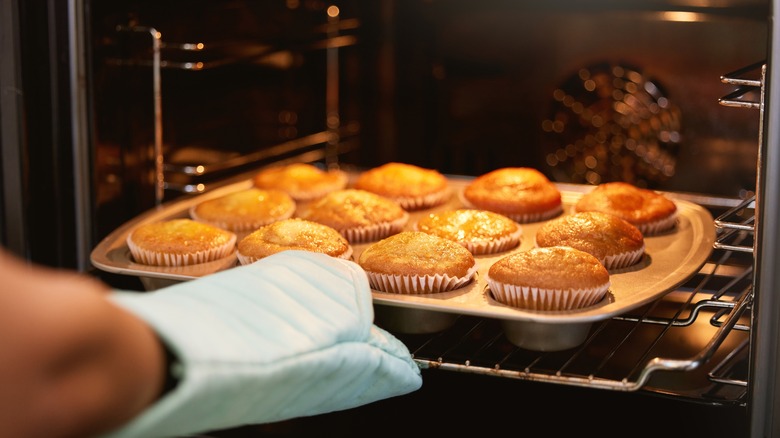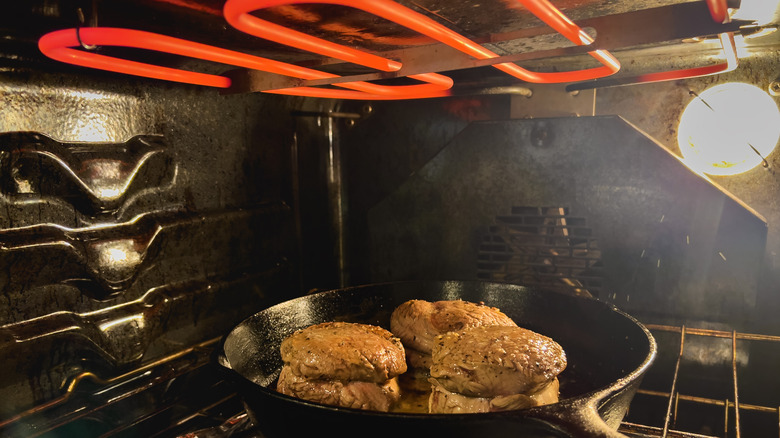The Difference Between Broiling And Baking
You could fill an entire set of encyclopedias with all of the different terms and definitions that come with learning how to cook. It can be very difficult to learn all of the different types of cooking terminology, and the methods that come from them. Some, like braising and stewing, are very similar to one another, while others, like grilling and boiling, are worlds different. Broiling and baking tend to be lumped together. On the surface, they appear to be very similar, but they are actually quite different.
Though both methods utilize the oven, broiling and baking are not interchangeable. Baking, being the gentler method, is naturally suited for dishes with a larger volume that need to be cooked thoroughly. This includes breads, cakes, pies, and casseroles. Broiling, on the other hand, is far more intense and serves a very specific purpose. It is best used to brown food and cook thinner slices of meat. Think of it like grilling in the oven. Be aware, however, that broiling does not always cook food all the way through.
So, as you can see, the main difference between the two is how they utilize time and heat. Baking and broiling distribute thermal energy very differently from one another, and broiling works much faster than baking.
Ambient vs. direct heat
Baking utilizes ambient heat at gentle to moderate temperatures. This heat surrounds the food, gently penetrating and cooking the inside. Heat levels for baking range between 170 to 350 degrees Fahrenheit. Anything higher is considered roasting. The heat is typically generated by an element at the bottom of the oven. Baking usually utilizes the middle oven rack to achieve an even heat distribution.
Intense, direct heat is used for broiling. The heating element at the top of your oven sends 550-degree heat downwards toward your food. The top two racks in your oven are the broiling racks. This puts the food within as little as 3 inches of the heating element, allowing it to cook quickly. While heat is adjustable for baking, it is less so with the broiler. Most ovens simply have an on/off switch for the broiler, though some newer ones allow you to fiddle with broiler temperature settings.
Obviously, you're not going to broil something like a soufflé — nor can you bake a crust onto a steak. Each method has its own uses. Broiling browns food fast, while baking takes more time and patience. Understanding these timing factors and the heat levels that accompany them are the keys to knowing the differences between these two classic methods of cooking.

